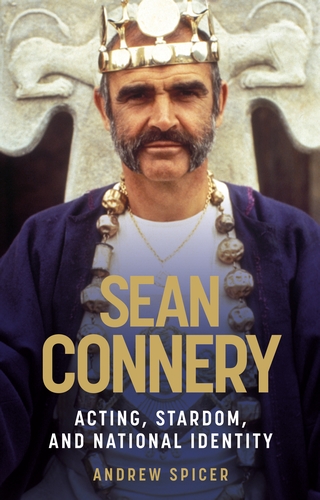Professor Andrew Spicer’s study provides an authoritative and comprehensive account of the career of one of one modern cinema’s most distinctive stars, an instantly recognisable cultural icon whose image and distinctive voice have penetrated deeply into global popular culture and public consciousness. The analysis highlights the importance of Connery’s unorthodox training as an actor and his early career, especially his television work that included Shakespeare, before dissecting the ‘Bond phenomenon’, which propelled Connery to international stardom on an unprecedented scale for a British actor but erased his own identity as a commodified serial star. Connery’s twenty year struggle to escape ‘Bondage’ is discussed at length: his attempts to play against that image in The Hill (1965) and The Offence (1973) and his gradual emergence as an epic, mythic presence in the mid-1970s in The Wind and the Lion, The Man Who Would Be King and Robin and Marian. The study analyses how Connery’s reinvention of himself as a father-mentor enabled him to enjoy a second period of superstardom from The Untouchables (1987) onwards, to ‘age successfully’ and to modulate his mythic persona into an all-encompassing ‘screen legend’. The significance of Connery’s complex embodiment of national identity is discussed throughout – the ways in which he imbued his screen characters with a working-class Scottishness – and through his public role as an activist campaigning for Scottish independence. The study encompasses discussion of the vexed question of Connery’s misogyny and the gender politics of his star persona.
This monograph takes a particular approach to examining stardom, understood as a specific occupation, a particular form of professional cultural labour that has an industrial as well as cultural significance. Stardom is conceptualised as both a material entity – a form of economic capital that can sell films and a charismatic performer who is paid a salary – and a discourse that shapes how that labour was recognised and valued across a variety of different cultural, social and commercial contexts, which change over time. Drawing on a wide range of archival and other sources, the volume emphasises the importance of exploring stars’ working lives, situated within the particular industrial systems in which that work takes place as they struggle for creative control over their careers.
Purchase in hardback at Manchester University Press



